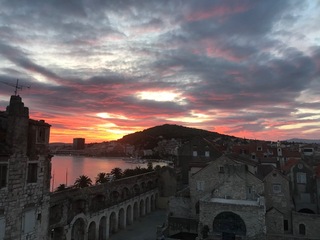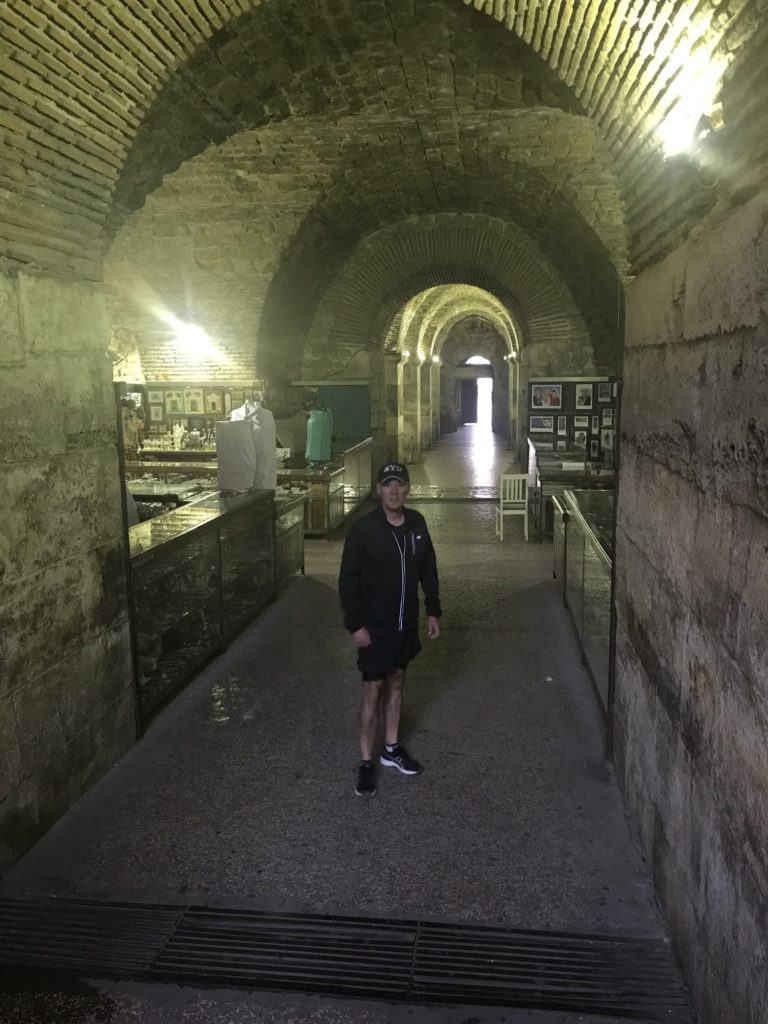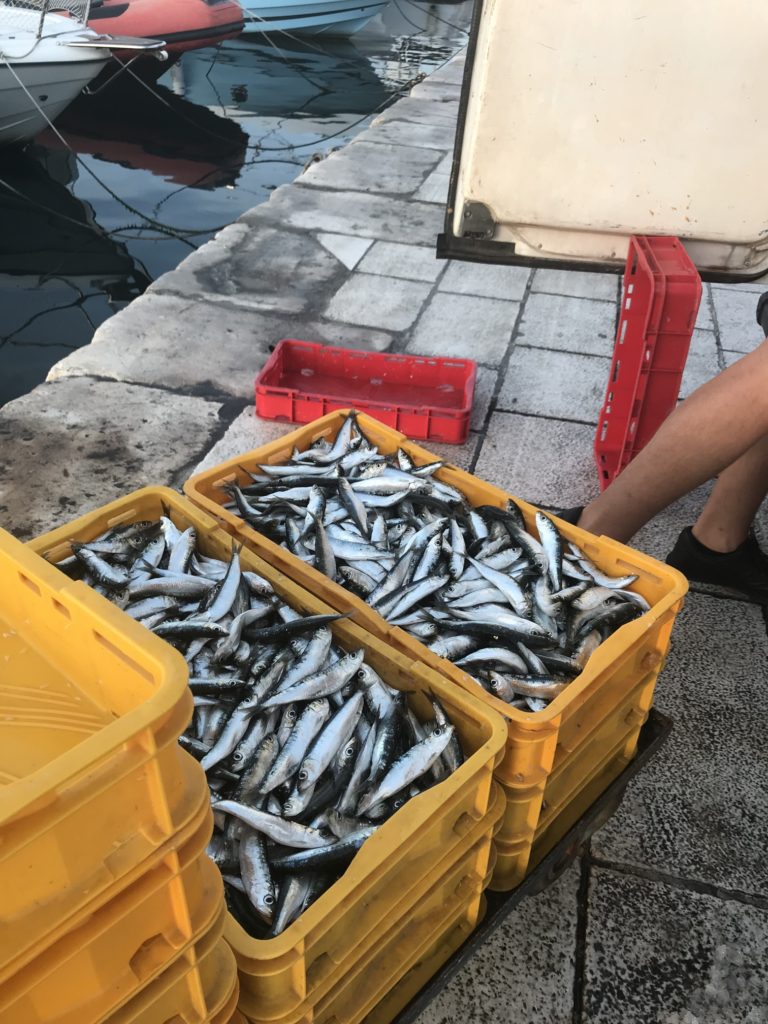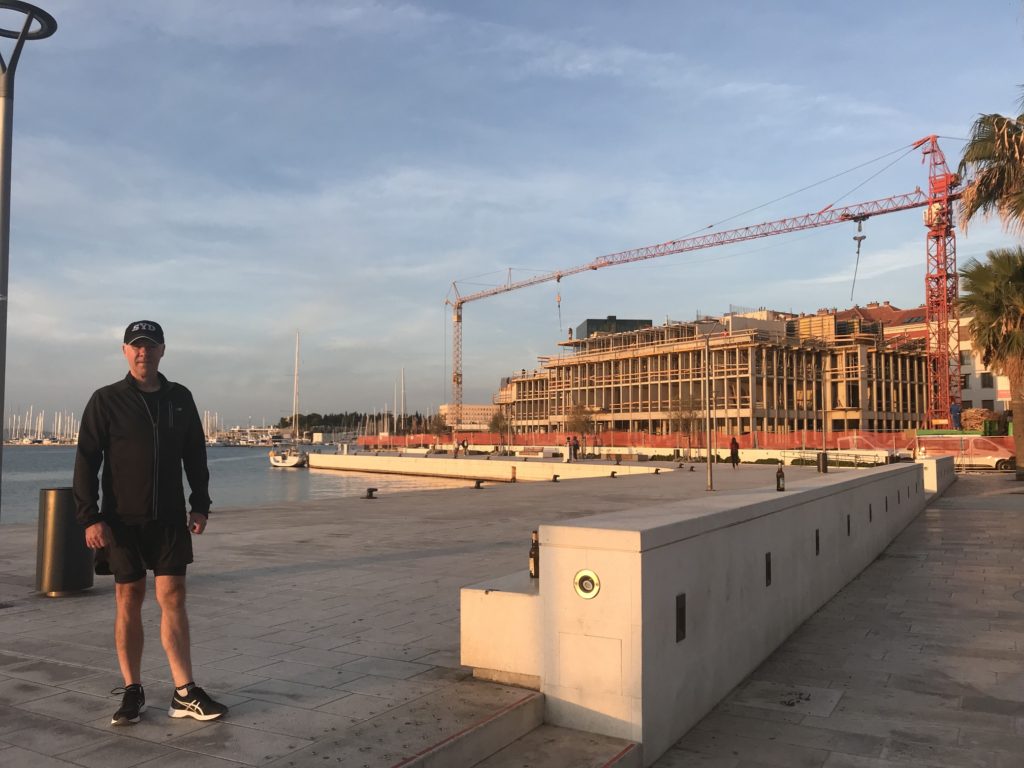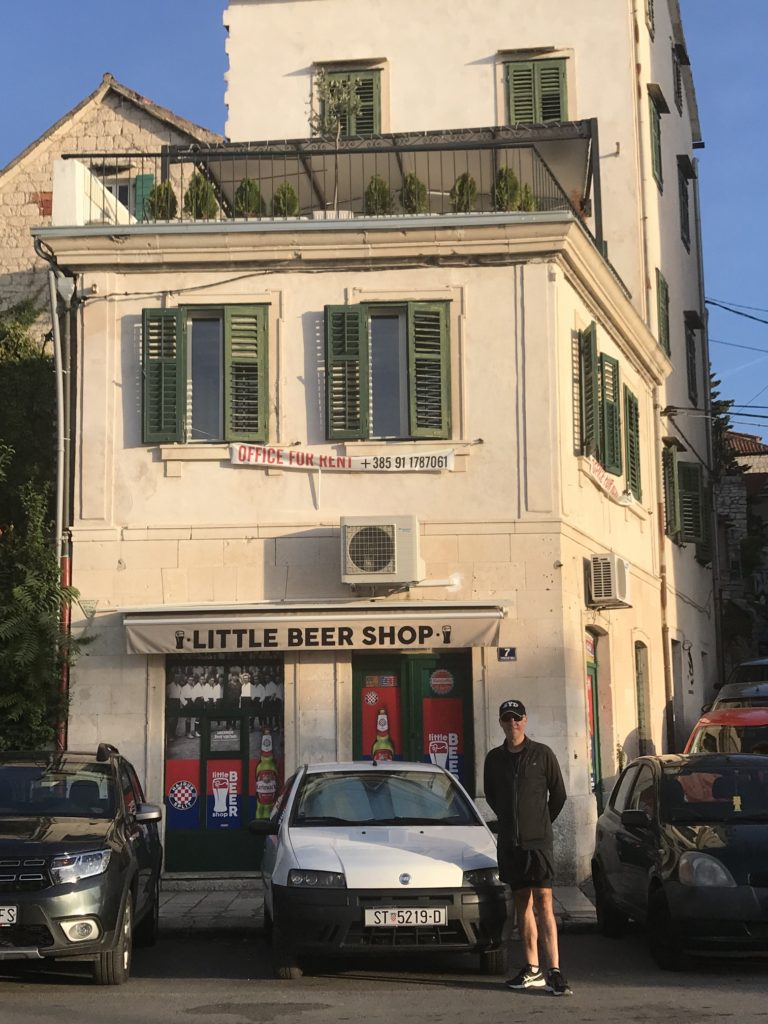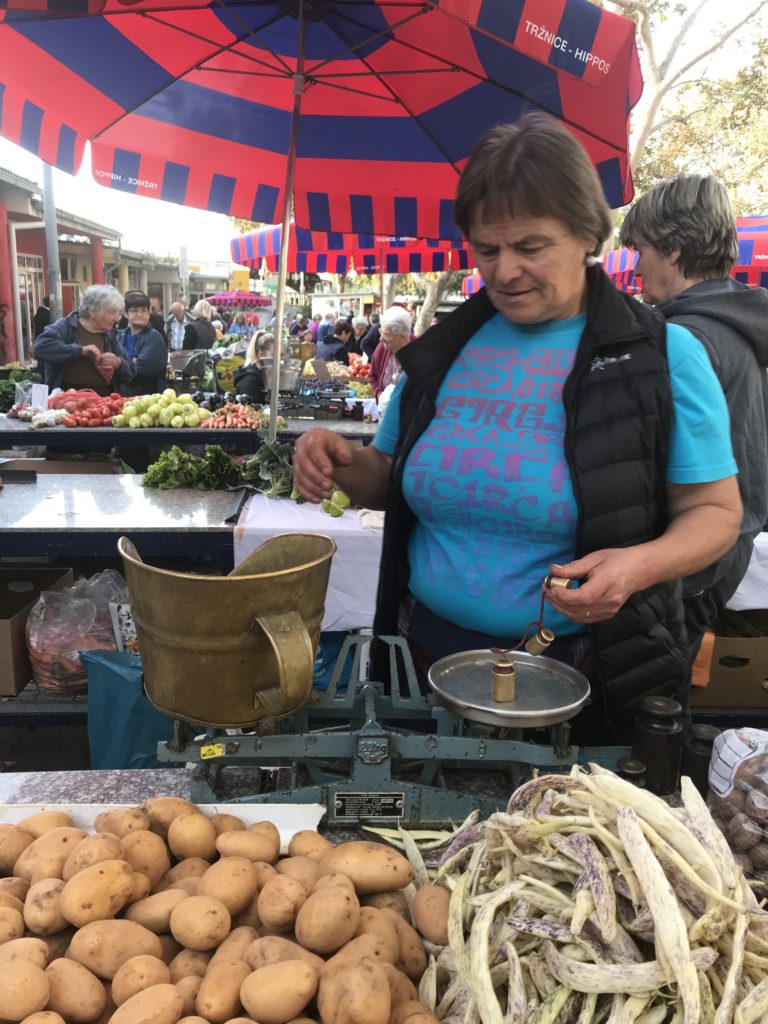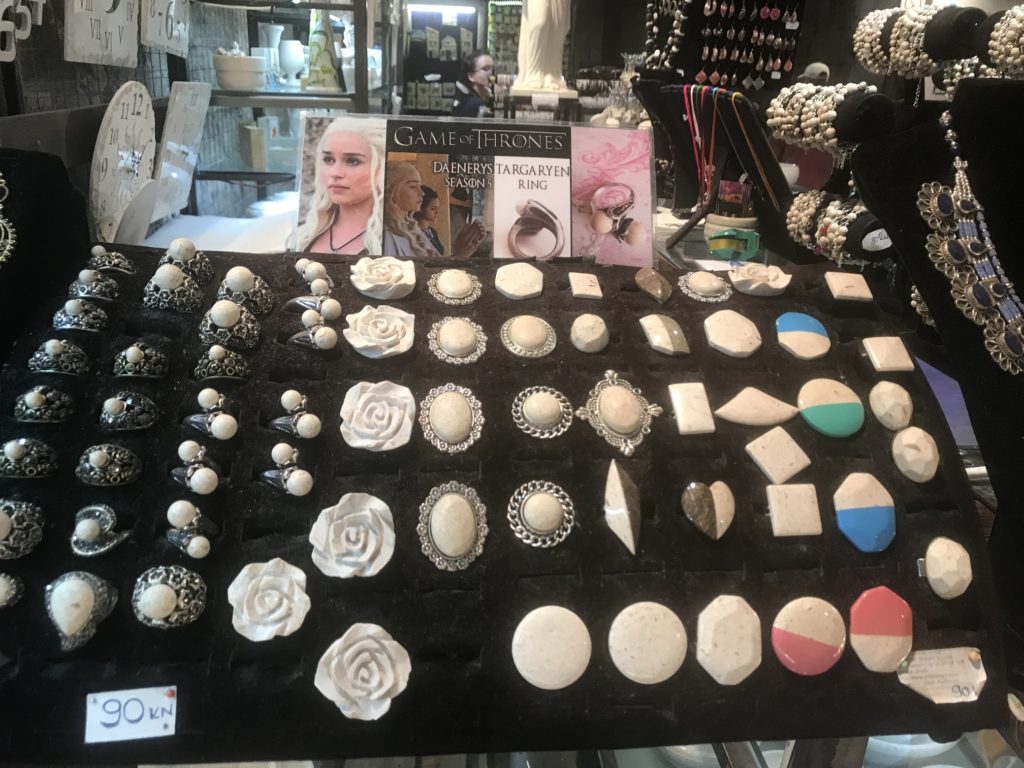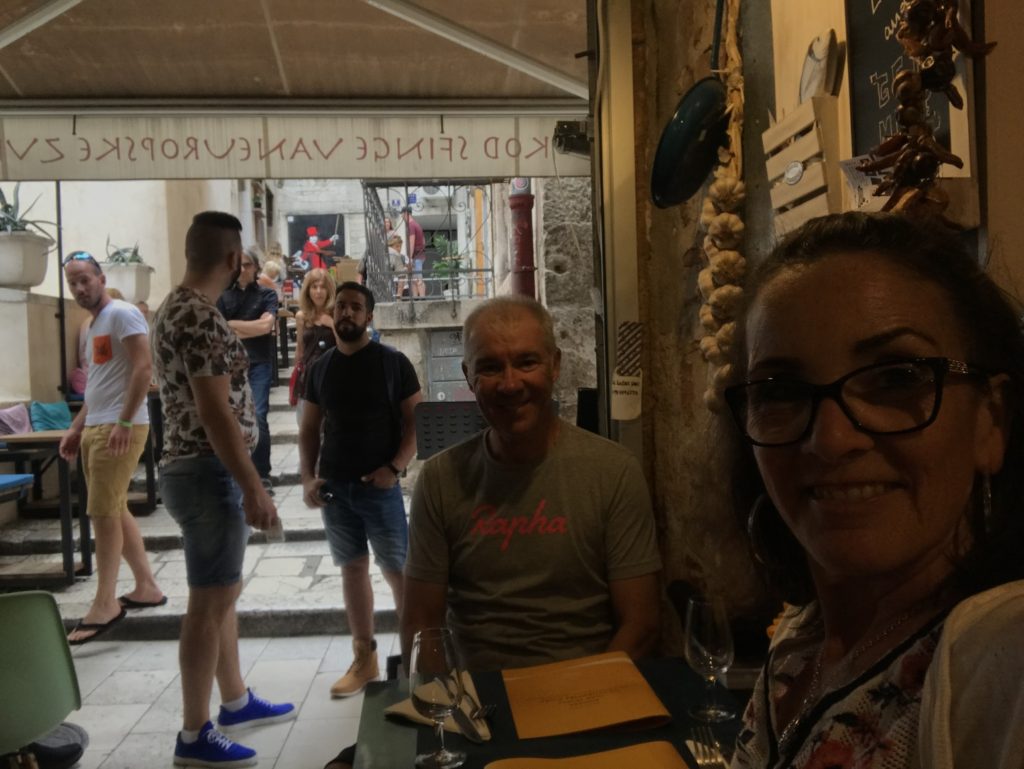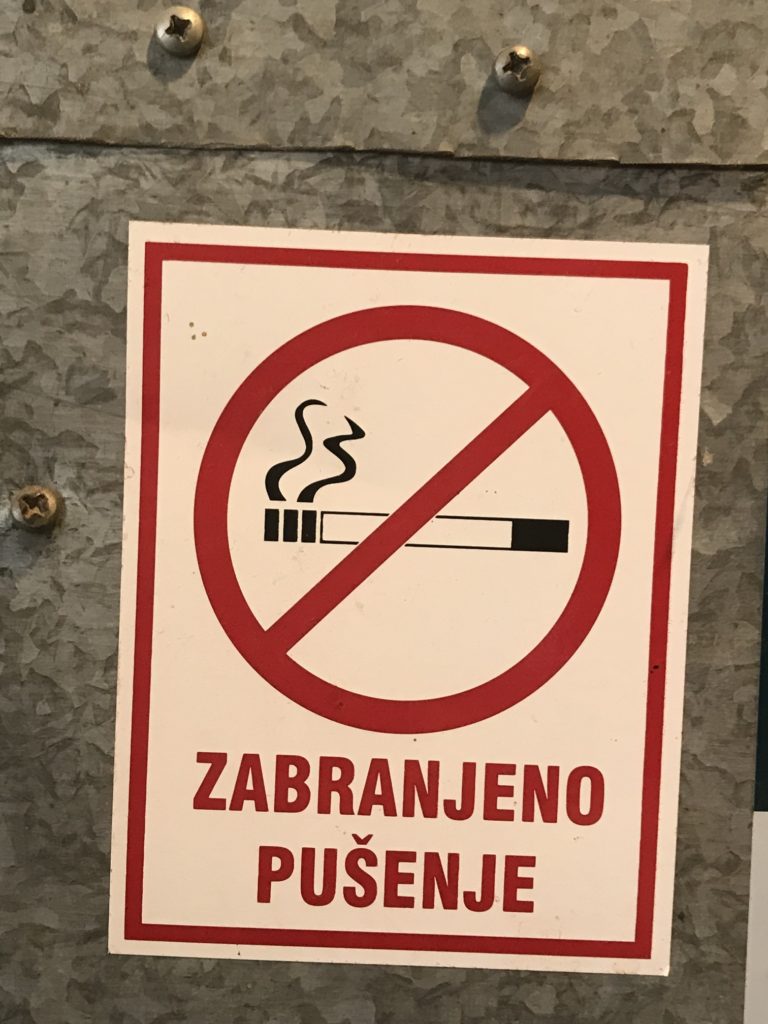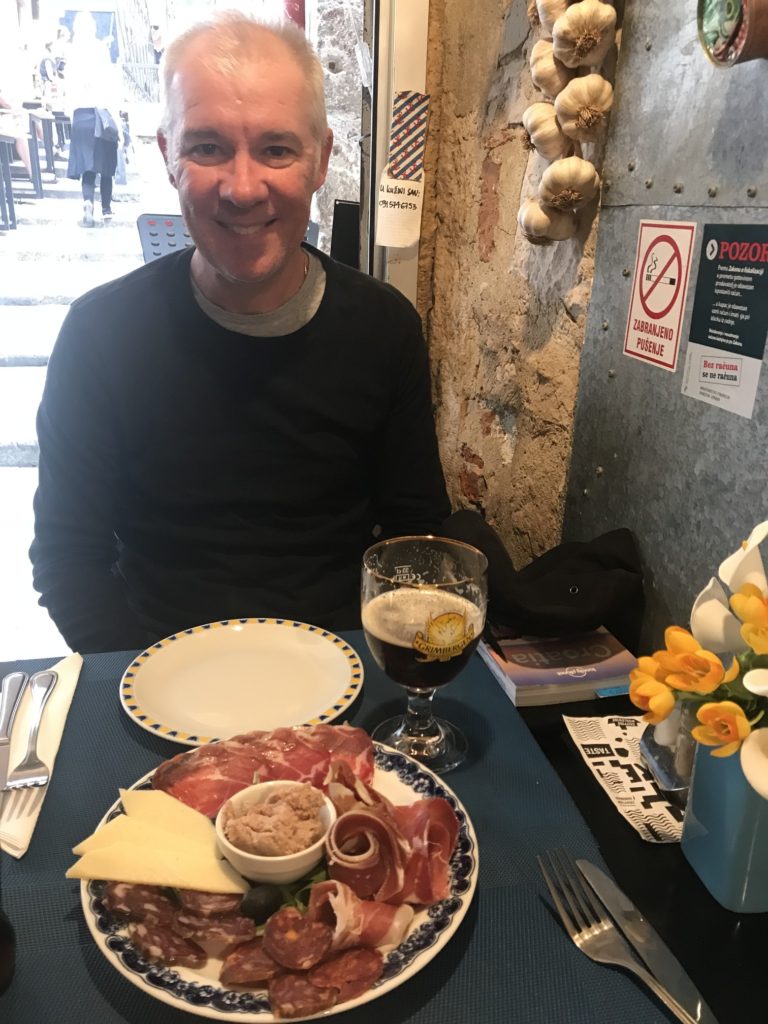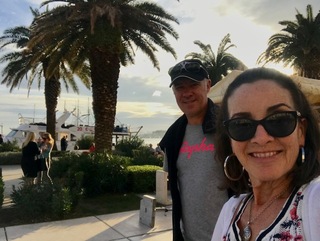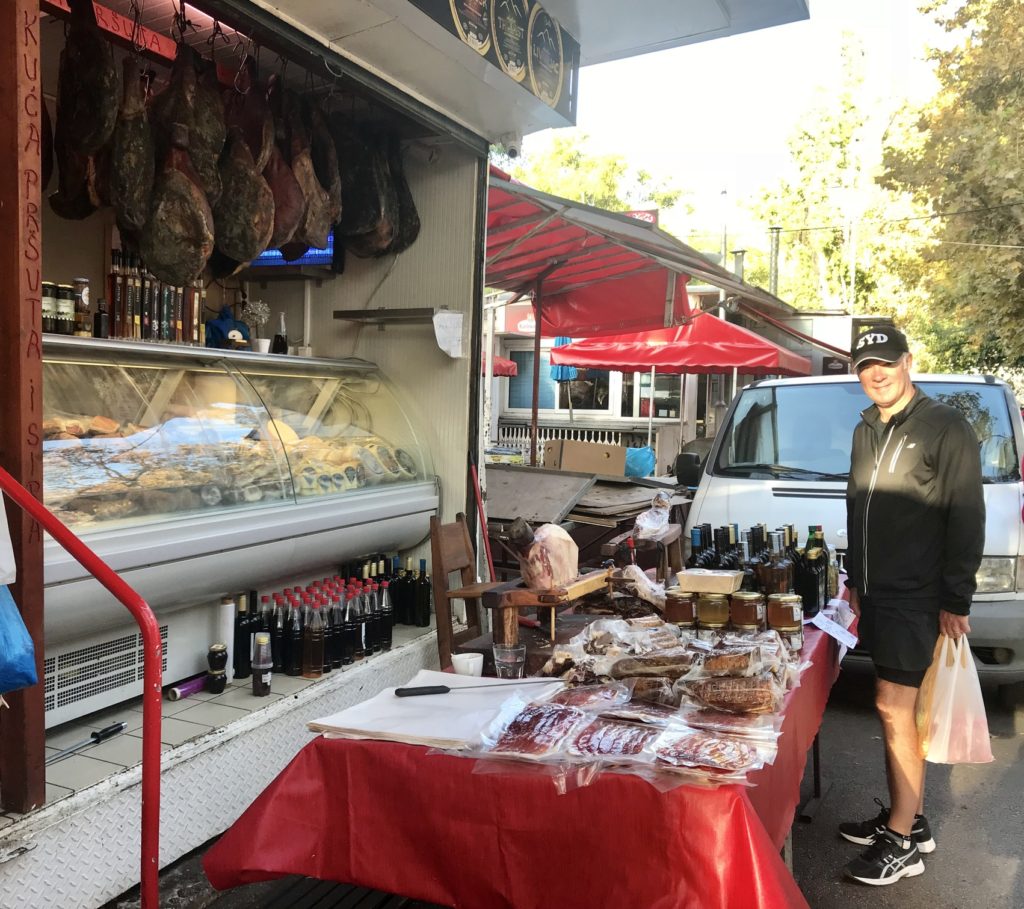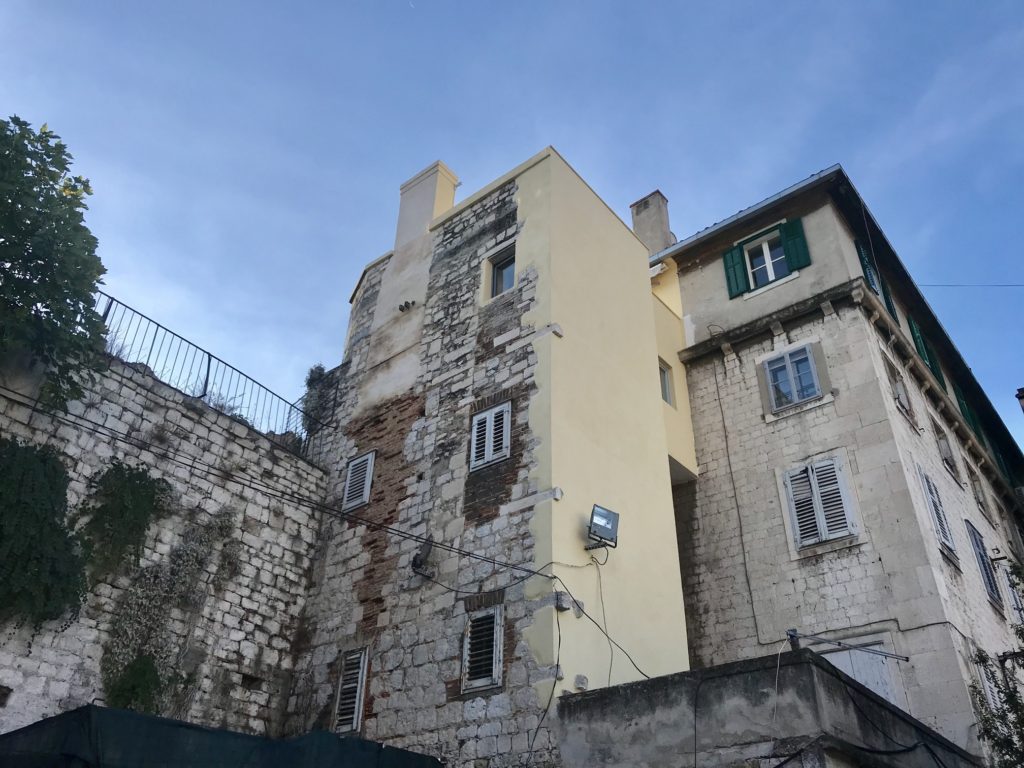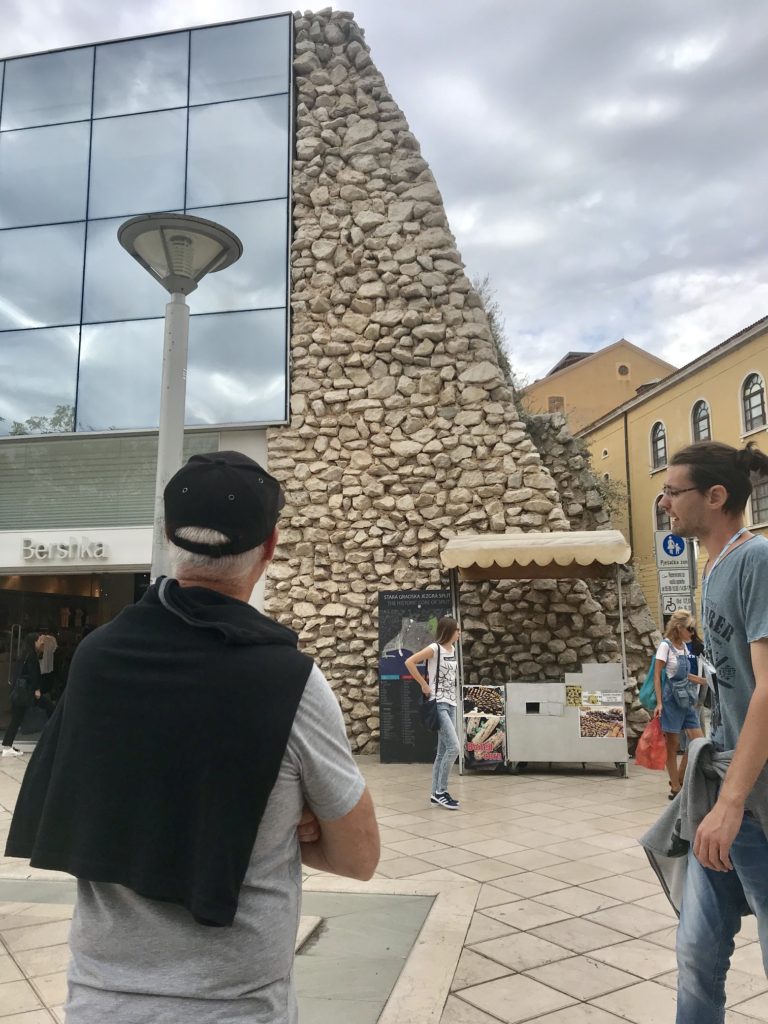Friday 5th October
It was another glorious morning and we are thankful for the great weather we’ve had on our trip thus far, today marking three full weeks, as we’ve only had one day where we’ve needed umbrellas, and, even that wasn’t for too long. We headed out for our morning walk and took this along the lengthy sea promenade that curves around the man (French) made Riva of Split. We also took the long flight of stairs up to a great observatory offering spectacular views over Split but, unfortunately, the sun didn’t favour photos from here at this time of day.
Split harbour is filled with luxury boats of all shapes and sizes giving the area a certain Riviera ambiance. Mark expressed the overly touristy nature of this area didn’t appeal to him and we had heard, in our tour last night, that many locals are moving out and letting their apartments to tourists which is contributing to this situation. Parallels to Venice and its social problems caused by being overrun with tourists were drawn here. Tourism is one of the main industries for Croatia generally though so this is an issue they will continue to struggle with. We’d also previously been told that membership to the EU was favoured by the young due to the increased mobility it offered but many older folk were not in favour due to this social disruption and impact on housing/rent prices. Their low population, less than 5 million (size of Sydney), is clearly an issue and a factor here.
Anyway, the beautiful views along the water front made for a lovely morning walk and we finished off with a visit to the markets to buy supplies for dinner.
Our plan for the day was to visit the Cathedral, as it was closed for a wedding yesterday when we went, and then to the Diocletian Palace basement.
The Diocletian Palace is truly amazing. What started as a Palace for Emperor Diocletian; with apartments, a few Temples, some military barracks and his personal mausoleum, over the centuries became filled and extended with many more buildings to make this a sprawling set of ruins with significant architectural features from all the subsequent periods of history. Our apartment building is actually one such addition to the Palace being built into the South /East corner wall of the 4th Century Roman Wall! Emperor Diocletian was the dude who persecuted thousands Christians but they had the final laugh by building the Cathedral on top of his mausoleum!
Diocletian Palace basement takes only 20 minutes or so to wander through but is well worth the visit. It is huge space sectioned off into numerous rooms of varying size and was only excavated in the 1960s with much of the space still being an archaeological dig today. The basement gives you some idea of what Diocletian’s apartment space above would have been like as it, apparently, had an identical footprint.
As we ventured out for the morning we had bumped into the lady who had spruiked us the walking tour from yesterday and we told her about our displeasure at not being given the full city tour. She was apologetic and understanding and offered to let us go along on today’s 10.30 am tour and so, after visiting the basement, that is what we did.
Our tour today with Mili was great and well made up for the poor tour of the night before. It’s hard to believe that both were supposed to be offering the same tour; the quality and quantity of content and the route followed was so different for both. Some of the many facts that our well informed guide appraised us of and that intrigued me are outlined below:
- Split: the name derived from ‘aspaladus’, a plant that grows here and in Greek sounds like ‘Split’.
- Dalmatian: named as from 7th Century BC Greeks : means sheep herders.
- Diocletian Palace a UNESCO site since 1979.
- Diocletian built the Palace as a home for himself, wife and daughter. It was a military base as well.
- He built this in area that was near his ancestral home and that had been inhabited by Greeks since 7th century BC!
- Diocletian was one of only 6 emperors to die of old age. Many were murdered by their own people.
- He was born poor but rose through the army to ascend to Emperor. Some suggest he killed the previous Emperor.
- Diocletian created the tetrarchy: where the empire was divided into quadrants and ruled by 4 Emperors: this developed a great deal of stability for the Empire. Subsequent bickering among Emperors eventually contributed to demise of Roman Empire.
- Diocletian was an egomaniac and declared himself a Pharaoh, God-like, given he also ruled Egypt.
- He also believed he was the son of Jupiter, hence the Temple of Jupiter next to his lodging.
- Diocletian demanded people prostate themselves to him in worship.
- He brought 12 Sphinx, circa 1600 BC (and only 2 intact left) and many Columns from Egypt to adorn his Palace.
- The Palace had two cross streets; each measured 10 soldiers in width.
- Basement: Sewage helped preserve the basement stone.
- Basement: only discovered after a WW2 bomb hit and exposed the area. Subsequently excavated in 1960s.
- Split: had 13 Black plagues: mostly sewage related.
- In 6th and 7th Century: Slavs invaded, to become what we now know as Croatians, and people escaped to the inside of the Palace so further building inside Palace started then.
- Emperor Constantine, after Diocletian, made Catholicism official Religion of Empire.
- Christians defiled Diocletian’s Palace and breaking symbols of his; example: 10 of the 12 Sphinx and all his statues and also by building the Cathedral over his mausoleum.
- The Bell Tower was built 1000 years after Palace.
- 15th century: Venetians in control and expanded city to west. New walls to defend against Ottomans.
- Venetians in power from 15-19th Century and built lots of Palaces in and on the western side of Diocletian Palace. Many of these are now galleries, cafes, restaurants etc.
- 90% of the apartments are rented. It is likened to a ‘Ghost town’ in winter.
- Venetians were defeated by Napoleon
- The sea front Promenade was built in 19th century by the French.
- The French occupation is known as the ‘Golden Age’ as they helped develop infrastructure: sewage disposal, and introduced general education and education about health etc.
- The French traded Split to Austrians and remained with them until WW1.
- The East and North gate were buried in the Middle Ages as they couldn’t defend so many gates. That’s why they are so well preserved today. They were excavated during the Venetian occupation.
- The notable foul smell you detect along the harbour is due to hot sulfur springs. That is why Diocletian built the Palace here. Also chases away flies. Hence fish markets located here too.
After the tour we had lynch at Konoba Kod Sfinge and then visited the Cathedral and it’s Belfry, Crypt and Baptistery. The Baptistery being in the Old Temple of Jupiter as one more insult to Emperor Diocletian.
We were rather weary after all of this activity and so went back to our apartment to rest our legs and recharge our phones. By 5 pm we felt strong enough to venture down to the Riva, Promenade to have an afternoon drink. Then it was back home for a night dining in at our apartment with the best balcony in all of Split!
Tomorrow we are off to Gradac. We’ve loved our time in Split, despite the hoards of other tourists, but think we needed a couple of more days. One to visit some Islands and one to visit Trogir; so if you’re planning a visit…. make it for four nights.
